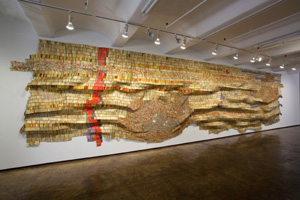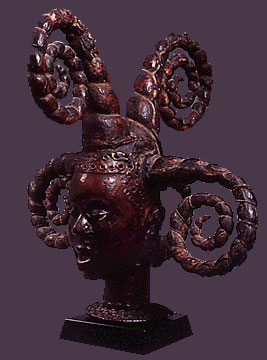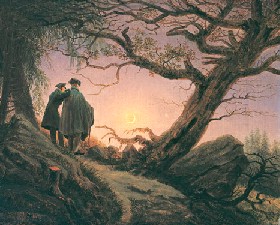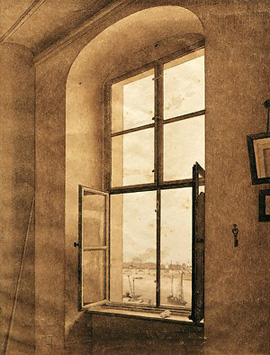6.25.25 — A Step Around the World
To wrap up from last time on the Met’s Rockefeller wing of non-Western art, no matter how well you prepare yourself for the reach of the Met’s renovated Rockefeller wing, a single step can come as a shock.
 And that is just what you face in taking an actual step halfway around the world, from Oceania to the Americas. It means leaving islands separated by wide oceans for a newfound density of human habitation. Make that a density of imagery as well in patterns and faces. They appear in tapestries with warm red tones suiting settled interiors. They appear in ceramics as burst of natural and supernatural life. Here, myth has it, the dead are destined to become ancestors.
And that is just what you face in taking an actual step halfway around the world, from Oceania to the Americas. It means leaving islands separated by wide oceans for a newfound density of human habitation. Make that a density of imagery as well in patterns and faces. They appear in tapestries with warm red tones suiting settled interiors. They appear in ceramics as burst of natural and supernatural life. Here, myth has it, the dead are destined to become ancestors.
Not that it is easy to tell the real from the unreal, but the accumulated grimaces feel like a discovery of the human. If they turn out to be far more than human, it is the divine in everyday regalia and the human in the midst of divine combat. Cats are symbols of dominance. Even in its patterning, art is taking risks. A cotton fabric embellished with features is fully abstract, with a simplicity not seen in Western art for centuries to come. It takes the form of alternating rectangles in yellow and deep, soft blue.
Art has a greater diversity within the Americas as well. Its sections mover from the agricultural planning of Colombia and Peru to Mexico City with the Avenue of the Dead. White clay permits burial jars as well. The time dimension becomes more important, too. There begins a post-classical civilization with the Incan empire—and from its loss in the face of Europeans. In due time, murals extend to city walls.
 After all that, to turn at last to male and female figures of Africa is to discover a familiarity and a relief. So many Mexican images within images? So much national and cultural combat? The art of Africa, it turns out, represents an unmatched sophistication and stability. Art serves to preserve not sacrifice and war but trade across peoples and biospheres. Maybe it took the new wing’s gathering of light, but the continent is nothing like the darkness you may have thought you knew. It is a point of origin for good reason.
After all that, to turn at last to male and female figures of Africa is to discover a familiarity and a relief. So many Mexican images within images? So much national and cultural combat? The art of Africa, it turns out, represents an unmatched sophistication and stability. Art serves to preserve not sacrifice and war but trade across peoples and biospheres. Maybe it took the new wing’s gathering of light, but the continent is nothing like the darkness you may have thought you knew. It is a point of origin for good reason.
Here, too, art has a sense of craft and materials, here in the hands of blacksmiths. It has a favored medium, too, masks—not just face masks but helmet masks, body masks, and headdresses. It would take a diligent viewer indeed to track their style and purpose across thousands of years and emerging nations. Are they, too, ancestral beings? Are they on the side of the angels? Once again you may find yourself with questions.
Africa raises more than any. Its galleries have the greatest integration of recent art as well. They had me thinking back to everything, that I had seen, including that feathery Peruvian blue. Strips of blue fabric from Mali hang gathered and loose. I cannot swear even now that I am at home in the reopened wing. I shall be trying to find my way for years to come around a third of the earth.
Read more, now in a feature-length article on this site.


